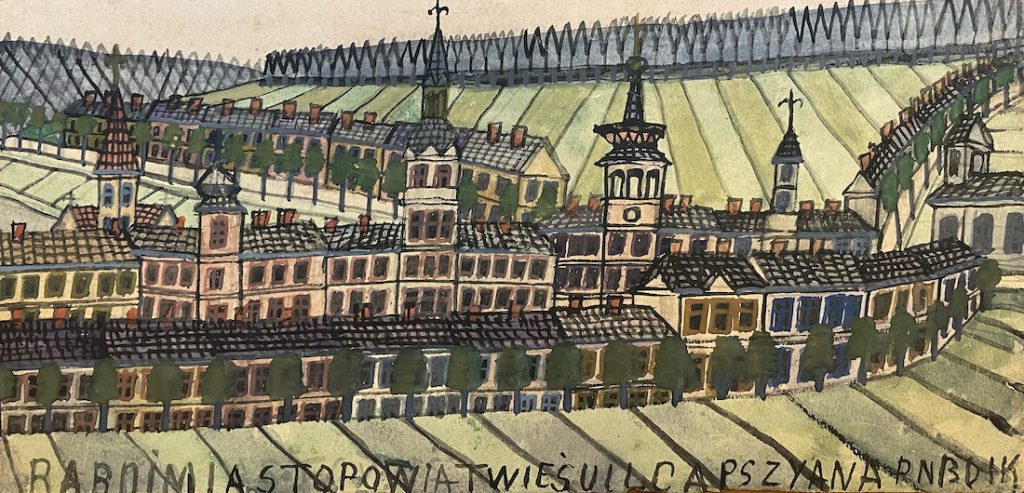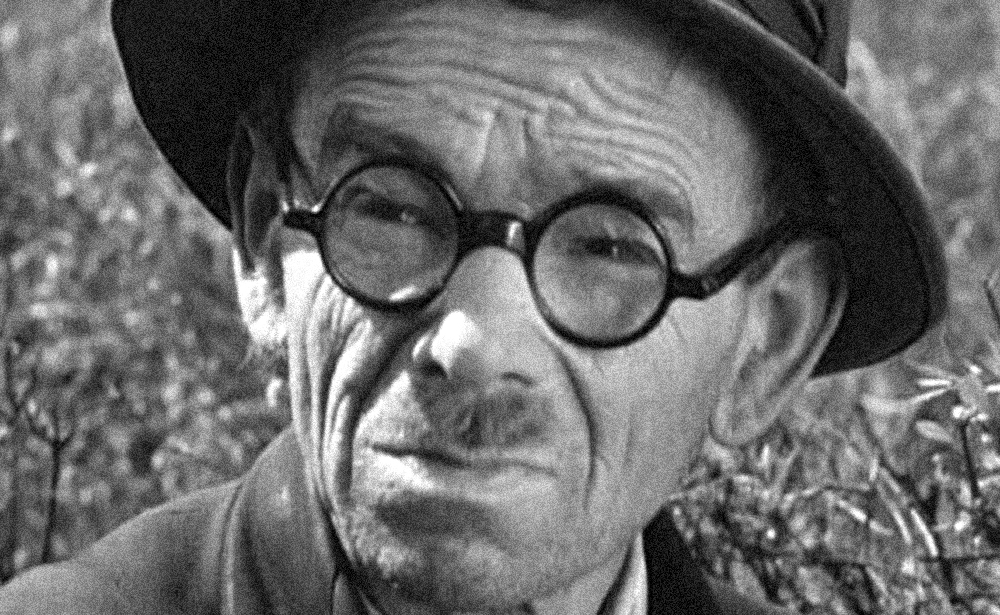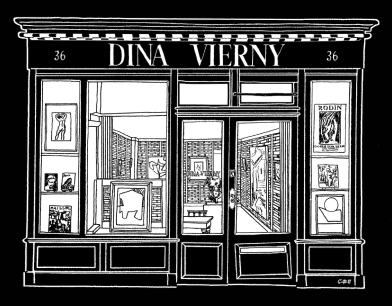All Exhibitions here


Epifaniusz Drowniak, or Nikifor Krynicki under his pseudonym, was born in Poland in 1895. He spent the first years of his life living in poverty with his mother. Orphaned during the First World War, he found himself isolated and marginalized in his village of Krynica. Epifaniusz began using his nickname “Nikifor” as a child, and used it at his first exhibition in Warsaw in 1949. It’s not known when Nikifor began drawing and painting, but his aim seems to have always been to become a painter. His earliest surviving works…
Epifaniusz Drowniak, or Nikifor Krynicki under his pseudonym, was born in Poland in 1895. He spent the first years of his life living in poverty with his mother. Orphaned during the First World War, he found himself isolated and marginalized in his village of Krynica. Epifaniusz began using his nickname “Nikifor” as a child, and used it at his first exhibition in Warsaw in 1949. It’s not known when Nikifor began drawing and painting, but his aim seems to have always been to become a painter. His earliest surviving works date from 1920 and already demonstrate great effort and a genuine desire to perfect his technique. His work is commonly associated with naïve art and art brut.
Nikifor often depicts sacred themes in his work, with a particularly recurrent subject: the Greek Catholic church, whose image looms over the horizon. He also uses secular themes such as landscapes, architecture and portraits. His works on paper are always small-scale. Extremely poor, he used to reuse all kinds of materials (packaging, school books, etc.) and paint them on both sides. He lived from the sale of his drawings, “just enough to live on” in his own words. His reputation began to grow, however, in the 1950s-1960s, when collectors Ella and Andrzej Banach discovered his work. They exhibited, wrote and looked after him. From then on, he was exhibited in many countries (Poland, France, Belgium, Netherlands…), notably at the Galerie Dina Vierny in 1959. Another person took care of him from the 1960s onwards: Marian Włosiński, a painter who saw in Nikifor a great artist. His reputation continued to grow until his death in 1969. A museum was dedicated to him in 1995 in his native village of Krynica, as well as a biopic “Mój Nikifor”, in 2004.
The painter Edward Dwurnik said of him: “I have never experienced stronger emotions than those aroused by his paintings when seen in person. I first saw them in 1965. He was an accomplished painter, tall and deep, and he approached painting like the Renaissance masters – in a classical, honest way. Everything he painted was something he had SEEN. What he had seen was then reworked by his memory and imagination. He was perfect for freeing himself from the constraints of reality and creating a vision, a world, his own structure. He was telling his story and painting his world.”
Nikifor: A Painter Unlike Any Other, National Ethnographic Museum, Varsovie (16 novembre – 27 février 2022)
The Nikifor Exhibition, Polish Museum of America, Chicago (23 octobre – 15 janvier 2016)
Nikifor, National Museum of Ukrainian Folk Decorative Art, Ukraine (17 mai – 30 juin)
Nikifor. Kunst op straat geboren, Koningin Fabiolazaal, Anvers
Retrospective, National Ethnographic Museum, Varsovie
Nikifor, Galerie Nationale d’Art Zachęta, Varsovie
Nikifor, Galerie Dina Vierny, Paris (15 avril – 15 mai)
The Exhibition of Works of Art of Jan Nikifor, hall de la branche de Varsovie de l’Association des architectes polonais, Varsovie
Naive Realism, From Rousseau to Grandma Moses, Museum MORE, Gorssel (25 mars – 25 juin)
Naive.? Naive Art From The Infeld Collection, Museum Gugging, Klosterneuburg (27 janvier – 19 septembre)
Nikifors, Museum of Contemporary Art in Krakow, Cracovie (13 février – 12 avril)
Nikifors in Zakopane, Tatra Museum, Zakopane (30 avril – 07 juin)
Architectures, 2e biennale de l’Art Brut, Collection de l’Art Brut, Lausanne (13 novembre – 17 avril 2016)
Passages & repassages, Staatliche Museen zu Berlin, Berlin (9 mars – 30 juin)
Anna Ticho, David Kouwenaar, Polen Schildert, Nikifor, Zweedse Vorm, Verbondenheid Der Kunsten, Stedelijk Museum, Amsterdam (2 novembre – 28 octobre)
Nikifor, Teofil Ociepka, Paweł Stolorz, Paweł Wróbel (Peinture), Leon Kudła (Sculpture), Galerie Nationale d’Art Zachęta, Varsovie (31 juillet – 31 août)
Expo 58 (Exposition universelle et internationale de Bruxelles), Heysel, Bruxelles (17 avril – 19 octobre)
Exhibition of Polish folk art, R.W.S. Galleries, Londres (3 – 24 mai)
Exhibition of Self-Taught Artists, Association des artistes ukrainiens indépendants, Lviv
Exposition de peintres français et Lviviens, National Ukrainian Museum, Kiev
Epifaniusz Drowniak, or Nikifor Krynicki under his pseudonym, was born in Poland in 1895. He spent the first years of his life living in poverty with his mother. Orphaned during the First World War, he found himself isolated and marginalized in his village of Krynica. Epifaniusz began using his nickname “Nikifor” as a child, and used it at his first exhibition in Warsaw in 1949. It’s not known when Nikifor began drawing and painting, but his aim seems to have always been to become a painter. His earliest surviving works date from 1920 and already demonstrate great effort and a genuine desire to perfect his technique. His work is commonly associated with naïve art and art brut.
Nikifor often depicts sacred themes in his work, with a particularly recurrent subject: the Greek Catholic church, whose image looms over the horizon. He also uses secular themes such as landscapes, architecture and portraits. His works on paper are always small-scale. Extremely poor, he used to reuse all kinds of materials (packaging, school books, etc.) and paint them on both sides. He lived from the sale of his drawings, “just enough to live on” in his own words. His reputation began to grow, however, in the 1950s-1960s, when collectors Ella and Andrzej Banach discovered his work. They exhibited, wrote and looked after him. From then on, he was exhibited in many countries (Poland, France, Belgium, Netherlands…), notably at the Galerie Dina Vierny in 1959. Another person took care of him from the 1960s onwards: Marian Włosiński, a painter who saw in Nikifor a great artist. His reputation continued to grow until his death in 1969. A museum was dedicated to him in 1995 in his native village of Krynica, as well as a biopic “Mój Nikifor”, in 2004.
The painter Edward Dwurnik said of him: “I have never experienced stronger emotions than those aroused by his paintings when seen in person. I first saw them in 1965. He was an accomplished painter, tall and deep, and he approached painting like the Renaissance masters – in a classical, honest way. Everything he painted was something he had SEEN. What he had seen was then reworked by his memory and imagination. He was perfect for freeing himself from the constraints of reality and creating a vision, a world, his own structure. He was telling his story and painting his world.”
Nikifor: A Painter Unlike Any Other, National Ethnographic Museum, Varsovie (16 novembre – 27 février 2022)
The Nikifor Exhibition, Polish Museum of America, Chicago (23 octobre – 15 janvier 2016)
Nikifor, National Museum of Ukrainian Folk Decorative Art, Ukraine (17 mai – 30 juin)
Nikifor. Kunst op straat geboren, Koningin Fabiolazaal, Anvers
Retrospective, National Ethnographic Museum, Varsovie
Nikifor, Galerie Nationale d’Art Zachęta, Varsovie
Nikifor, Galerie Dina Vierny, Paris (15 avril – 15 mai)
The Exhibition of Works of Art of Jan Nikifor, hall de la branche de Varsovie de l’Association des architectes polonais, Varsovie
Naive Realism, From Rousseau to Grandma Moses, Museum MORE, Gorssel (25 mars – 25 juin)
Naive.? Naive Art From The Infeld Collection, Museum Gugging, Klosterneuburg (27 janvier – 19 septembre)
Nikifors, Museum of Contemporary Art in Krakow, Cracovie (13 février – 12 avril)
Nikifors in Zakopane, Tatra Museum, Zakopane (30 avril – 07 juin)
Architectures, 2e biennale de l’Art Brut, Collection de l’Art Brut, Lausanne (13 novembre – 17 avril 2016)
Passages & repassages, Staatliche Museen zu Berlin, Berlin (9 mars – 30 juin)
Anna Ticho, David Kouwenaar, Polen Schildert, Nikifor, Zweedse Vorm, Verbondenheid Der Kunsten, Stedelijk Museum, Amsterdam (2 novembre – 28 octobre)
Nikifor, Teofil Ociepka, Paweł Stolorz, Paweł Wróbel (Peinture), Leon Kudła (Sculpture), Galerie Nationale d’Art Zachęta, Varsovie (31 juillet – 31 août)
Expo 58 (Exposition universelle et internationale de Bruxelles), Heysel, Bruxelles (17 avril – 19 octobre)
Exhibition of Polish folk art, R.W.S. Galleries, Londres (3 – 24 mai)
Exhibition of Self-Taught Artists, Association des artistes ukrainiens indépendants, Lviv
Exposition de peintres français et Lviviens, National Ukrainian Museum, Kiev

Epifaniusz Drowniak, or Nikifor Krynicki under his pseudonym, was born in Poland in 1895. He spent the first years of his life living in poverty with his mother. Orphaned during the First World War, he found himself isolated and marginalized in his village of Krynica. Epifaniusz began using his nickname “Nikifor” as a child, and used it at his first exhibition in Warsaw in 1949. It’s not known when Nikifor began drawing and painting, but his aim seems to have always been to become a painter. His earliest surviving works…
Epifaniusz Drowniak, or Nikifor Krynicki under his pseudonym, was born in Poland in 1895. He spent the first years of his life living in poverty with his mother. Orphaned during the First World War, he found himself isolated and marginalized in his village of Krynica. Epifaniusz began using his nickname “Nikifor” as a child, and used it at his first exhibition in Warsaw in 1949. It’s not known when Nikifor began drawing and painting, but his aim seems to have always been to become a painter. His earliest surviving works date from 1920 and already demonstrate great effort and a genuine desire to perfect his technique. His work is commonly associated with naïve art and art brut.
Nikifor often depicts sacred themes in his work, with a particularly recurrent subject: the Greek Catholic church, whose image looms over the horizon. He also uses secular themes such as landscapes, architecture and portraits. His works on paper are always small-scale. Extremely poor, he used to reuse all kinds of materials (packaging, school books, etc.) and paint them on both sides. He lived from the sale of his drawings, “just enough to live on” in his own words. His reputation began to grow, however, in the 1950s-1960s, when collectors Ella and Andrzej Banach discovered his work. They exhibited, wrote and looked after him. From then on, he was exhibited in many countries (Poland, France, Belgium, Netherlands…), notably at the Galerie Dina Vierny in 1959. Another person took care of him from the 1960s onwards: Marian Włosiński, a painter who saw in Nikifor a great artist. His reputation continued to grow until his death in 1969. A museum was dedicated to him in 1995 in his native village of Krynica, as well as a biopic “Mój Nikifor”, in 2004.
The painter Edward Dwurnik said of him: “I have never experienced stronger emotions than those aroused by his paintings when seen in person. I first saw them in 1965. He was an accomplished painter, tall and deep, and he approached painting like the Renaissance masters – in a classical, honest way. Everything he painted was something he had SEEN. What he had seen was then reworked by his memory and imagination. He was perfect for freeing himself from the constraints of reality and creating a vision, a world, his own structure. He was telling his story and painting his world.”
Nikifor: A Painter Unlike Any Other, National Ethnographic Museum, Varsovie (16 novembre – 27 février 2022)
The Nikifor Exhibition, Polish Museum of America, Chicago (23 octobre – 15 janvier 2016)
Nikifor, National Museum of Ukrainian Folk Decorative Art, Ukraine (17 mai – 30 juin)
Nikifor. Kunst op straat geboren, Koningin Fabiolazaal, Anvers
Retrospective, National Ethnographic Museum, Varsovie
Nikifor, Galerie Nationale d’Art Zachęta, Varsovie
Nikifor, Galerie Dina Vierny, Paris (15 avril – 15 mai)
The Exhibition of Works of Art of Jan Nikifor, hall de la branche de Varsovie de l’Association des architectes polonais, Varsovie
Naive Realism, From Rousseau to Grandma Moses, Museum MORE, Gorssel (25 mars – 25 juin)
Naive.? Naive Art From The Infeld Collection, Museum Gugging, Klosterneuburg (27 janvier – 19 septembre)
Nikifors, Museum of Contemporary Art in Krakow, Cracovie (13 février – 12 avril)
Nikifors in Zakopane, Tatra Museum, Zakopane (30 avril – 07 juin)
Architectures, 2e biennale de l’Art Brut, Collection de l’Art Brut, Lausanne (13 novembre – 17 avril 2016)
Passages & repassages, Staatliche Museen zu Berlin, Berlin (9 mars – 30 juin)
Anna Ticho, David Kouwenaar, Polen Schildert, Nikifor, Zweedse Vorm, Verbondenheid Der Kunsten, Stedelijk Museum, Amsterdam (2 novembre – 28 octobre)
Nikifor, Teofil Ociepka, Paweł Stolorz, Paweł Wróbel (Peinture), Leon Kudła (Sculpture), Galerie Nationale d’Art Zachęta, Varsovie (31 juillet – 31 août)
Expo 58 (Exposition universelle et internationale de Bruxelles), Heysel, Bruxelles (17 avril – 19 octobre)
Exhibition of Polish folk art, R.W.S. Galleries, Londres (3 – 24 mai)
Exhibition of Self-Taught Artists, Association des artistes ukrainiens indépendants, Lviv
Exposition de peintres français et Lviviens, National Ukrainian Museum, Kiev
